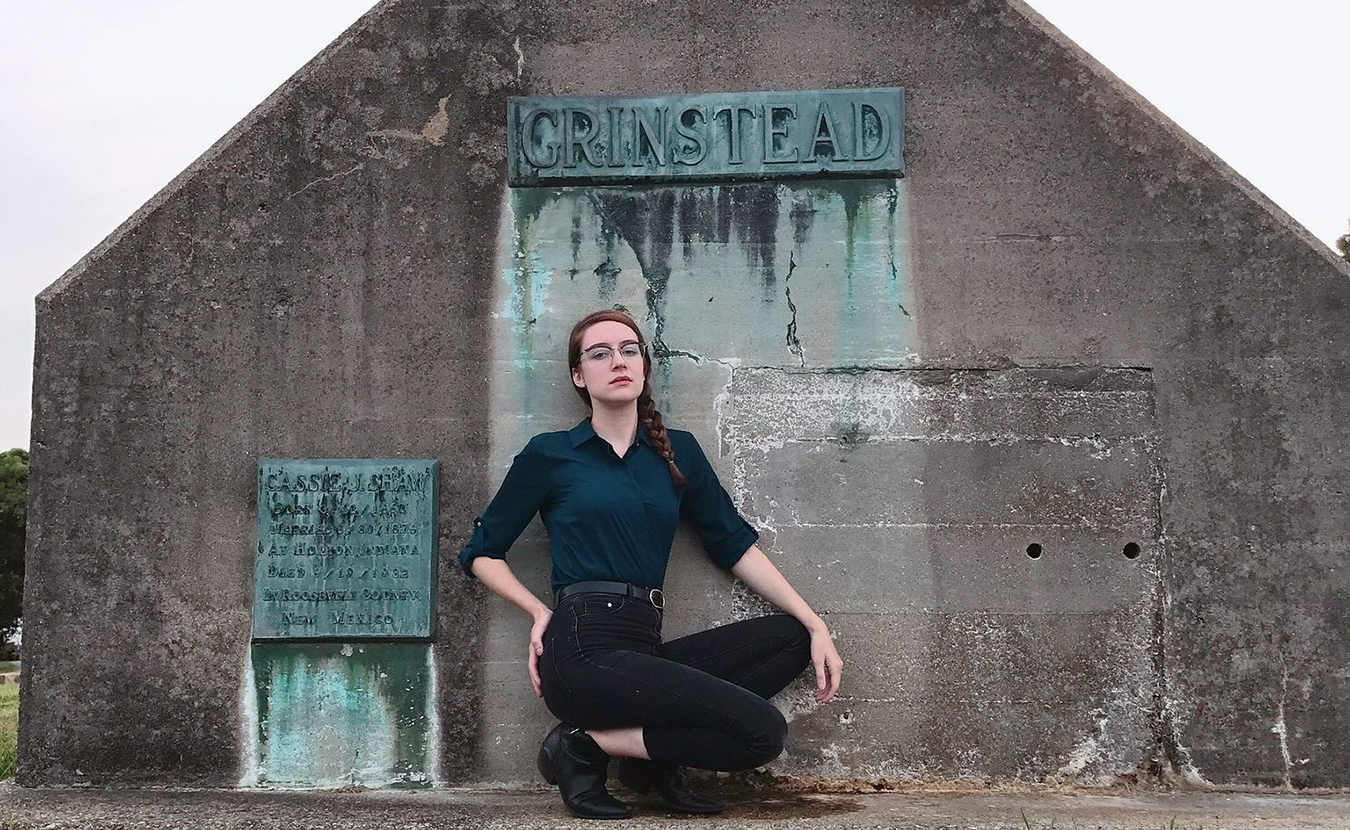It all started with JonBenét Ramsey. When Sarah Kolodziej was five, she saw a picture of the child beauty queen on a tabloid magazine in the grocery store. She asked her mother who the girl on the cover was — a question her mother was hesitant to answer. Her mom explained that the girl on the magazine had been murdered, but nobody knew who did it.
This, according to Kolodziej, was when her interest in true crime began.
“I was a weird kid,” she says.
Kolodziej, now in her 20s, writes a blog and has an Instagram account called Crime Spotlight. The social media account-turned-website serves as her tool to showcase local true-crime stories — including cases that don’t get a lot of spotlight from national publications but are, at least in Kolodziej’s opinion, worth bringing attention to.
One of those stories is the tale of The Body in the Forest. In the fall of 1975, two hunters discovered the partially decomposed remains of a body in Morgan-Monroe State Forest. The police followed a few leads, but ultimately the body (and by extension the killer) was never identified.
“I wish I could tell you there was a solution to this mystery, but there isn’t,” Kolodziej wrote on her blog. “I found all the information in this post from two contemporary news clippings in The Indianapolis Star, but couldn’t locate any further updates about the case.”
Another particularly interesting case is the story of The Gulch. In that piece, Kolodziej cites an obscure piece of criminology literature from 1937 (Report On Ecological Survey Of Crime And Delinquency In Bloomington, Indiana: National Youth Administration and the Indiana University Institute of Criminal Law and Criminology, if anyone’s looking for some fun reading) that describes the less-than-savory history of a section of what is now the B-Line Trail.
According to a resident quoted in the book, “There is a place known as Death Valley, along the tracks south of 11th Street, where the switch from the Monon [Railroad] hits the Illinois Central, about a block east of the water tower. It gets its name because of a number of persons who have been found dead there. That is the place where they roll the drunks, and also the place they leave the bodies when they take persons for a ride.”
Fact-checking and extensive background research are important steps in Kolodziej’s writing process. She sifts through newspapers, national missing persons registries, and ongoing police investigations, among countless other records and histories, for these stories. This kind of intensive investigation is common in Kolodziej’s work for Crime Spotlight and requires a close attention to detail.
Kolodziej realizes the responsibility that accompanies the telling of these tales. These aren’t just entertaining stories that never happened, she says. Real people were affected by these events and, most of the time, someone lost their life. To her, examining and telling every known angle of the story is crucial.
“It’s really important to me that I do the case justice and that I tell all the known facts,” she says. “Because I don’t want it to be some sensational thing where I’m picking and choosing the facts that are most prurient or graphic. I want to tell everything that is known. … I am trying my hardest to get things right, and I’m trying my hardest not to be cavalier about the facts.”
Kolodziej performs a bulk of her research online but occasionally she steps out and goes to the Indiana Room of the Monroe County Public Library, which archives old newspaper clippings on a wide variety of subjects. The clips that interest Kolodziej the most are usually filed under the categories of Suicide, Crime, and Murder. Murder is the largest of the three, she says.
The process for researching the crimes is tactile, Kolodziej says, which is why she prefers the physical files in the library. There, she can lay out all of the clips and news stories in chronological order to get a better idea of the timetable of events that transpired over the course of whatever crime she’s researching.
The archives also have stories and photos that may not be available online and tend to have better information on older cases than most digital newspaper archives, she says. Stories that have happened during the internet age are usually pretty easy to find online, but go back any further and things become hazy.
With their pre-internet information, the archives are also useful for researching unsolved or cold cases. Kolodziej has been drawn particularly to unsolved cases that involve unidentified bodies. Many of these cases happened before DNA sampling and other high-tech forensic crime solving was implemented. Now, especially in cases such as the unidentified body in Morgan-Monroe, there’s no longer an opportunity to collect DNA. As such, these cases will more than likely remain forever unsolved.
“I’m interested in the puzzle of an unsolved crime,” she says. “I like an unanswered question. There’s something inherently satisfying but also frustrating about [an unsolved crime] — you can endlessly puzzle over it.”
The website and Instagram account are going to remain a side project. While she enjoys writing and researching true crime stories, she’s found her passion in teaching. She just finished a student-teaching position and is now looking for a full-time job. As such, she warns that the frequency of posts may be slower in the coming months. But she’ll still keep the website and social media page up. To her, it serves as an important creative outlet.
“It’s never going to be, like, a job,” she says. “I still think it’s fun to have a hobby outside your career. I don’t think it’s a good idea to do your art as a job, because I think it then becomes sort of passionless.”
Through Crime Spotlight, Kolodziej has managed to take true crime, a genre that has experienced a renaissance in recent years, and make it local. Every day, new podcasts, books, and Youtube channels are created to tap into the growing market for the macabre. Most of them rehash the same cluster of stories, with little difference between them other than the person telling the tale. But by digging into Indiana’s past, Kolodziej is slowly uncovering our state’s own personal and unique history of crime and murder, one faded newspaper article at a time.


 #bloomington #crime #truecrime #murder #pigeonhill #monorailroad #illinoiscentralrailroad
#bloomington #crime #truecrime #murder #pigeonhill #monorailroad #illinoiscentralrailroad